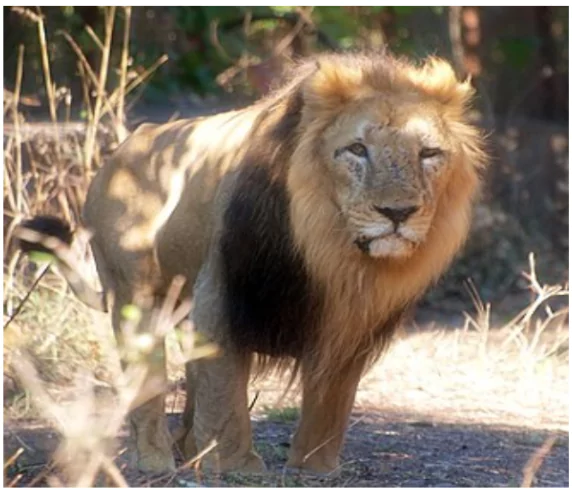The Forest Department in Gujarat has initiated the translocation of spotted deer and sambars from Gir Forest to Barda Wildlife Sanctuary (BWS), approximately 100 kilometers away.
As lions make Barda sanctuary their second home
- Objective: This effort aims to enhance the prey population for Asiatic lions in BWS.
- This month, forest officials captured 23 spotted deer from Gir using the Boma technique and transported them to Barda Wildlife Sanctuary (BWS) in Porbandar.
- Boma Technique: This method involves herding animals into an enclosure using funnel-like fencing.
Reasons for Translocation of Spotted Deer and Sambars from Gir Forest to Barda Wildlife Sanctuary (BWS)
- Supporting Lion Reintroduction: Lions return to Barda after a long absence, but the area lacks enough prey to sustain them.
- Translocating deer and sambars will provide a food source for these lions.
- Restoring the Ecosystem: Barda historically had lions, and reintroducing prey species helps restore the natural balance.
- Managing Gir Forest Population:
- Gir has a large spotted deer population (over 90,000).
- Translocating a small number helps manage Gir’s population while boosting Barda’s.
Enroll now for UPSC Online Course
About Barda Wildlife Sanctuary (BWS)
- Location: Gujarat, India.
- Proximity: About 15 kilometres from Porbandar and 100 kilometers west of Gir Forest National Park.
- Landscape: Hilly terrain covering 192.31 square kilometers.
- Rivers: Includes the Bileshvary River and the Joghri River.
- Dams: Two dams, Khambala and Fodara, are contained.
- Ethnic Communities: Inhabited by ethnic groups such as Maldharis, Bharvads, Rabaris, and Gadhvis.
- Development Project: The ‘Gir-Barda Project’ was initiated by the State Government in 1979 to establish Barda as a secondary habitat for the Asiatic lion.
Flora
- Notable Plants: This sanctuary includes plants such as Rayan, Babul, Ber, Jamun, Amli, Gorad, Bamboo, Dhav, Dhudhlo, and others.

Fauna
- Mammals: Leopard, hyena, wild boar, wolf, jackal, blue bull.
- Birds: Rare and endangered species like the spotted eagle and crested hawk eagle.
- Scientific Name: Panthera leo persica
- These are smaller than African lions.
- Breeding Season of Lions: Lions do not adhere to a particular breeding season, typically producing cubs approximately every two years.
- Gestation lasts an average of three to four months, with litter sizes typically ranging from one to four cubs.
- Reproductive Features: Lions are sexually mature by 2 years old, but males may not have the opportunity to mate until they are closer to 5 years old. They are polygamous, with the dominant male of the pride breeding with multiple females in the group.
Conservation Efforts
- Asiatic Lion Conservation Project: Initiated by the Union Ministry of Environment, Forests, and Climate Change (MoEFCC).
- Duration: Approved for three financial years from 2018 to 2021.
- Objectives: Focuses on scientific management, community involvement, and coordination with multiple agencies for disease control and veterinary care to ensure the overall conservation of Asiatic lions.
|
- Habitat: West Bengal in the east to Rewa in Madhya Pradesh, central India.
- Current Habitat: Now restricted to Gir National Park and Wildlife Sanctuary.
- Distinct Feature: Notable for a longitudinal fold of skin along its belly.
- Protection Status
- IUCN Red List: Classified as ‘Endangered’.
- CITES: Listed in ‘Appendix I’.
- Wildlife (Protection) Act 1972: Included in ‘Schedule I’.
- Threats
- Vulnerability: Susceptible to unpredictable events like plagues or natural disasters.
- Human Conflict: Poaching and retaliatory killings by locals near Gir National Park due to livestock attacks.
Check Out UPSC Modules From PW Store
![]() 22 Jun 2024
22 Jun 2024

